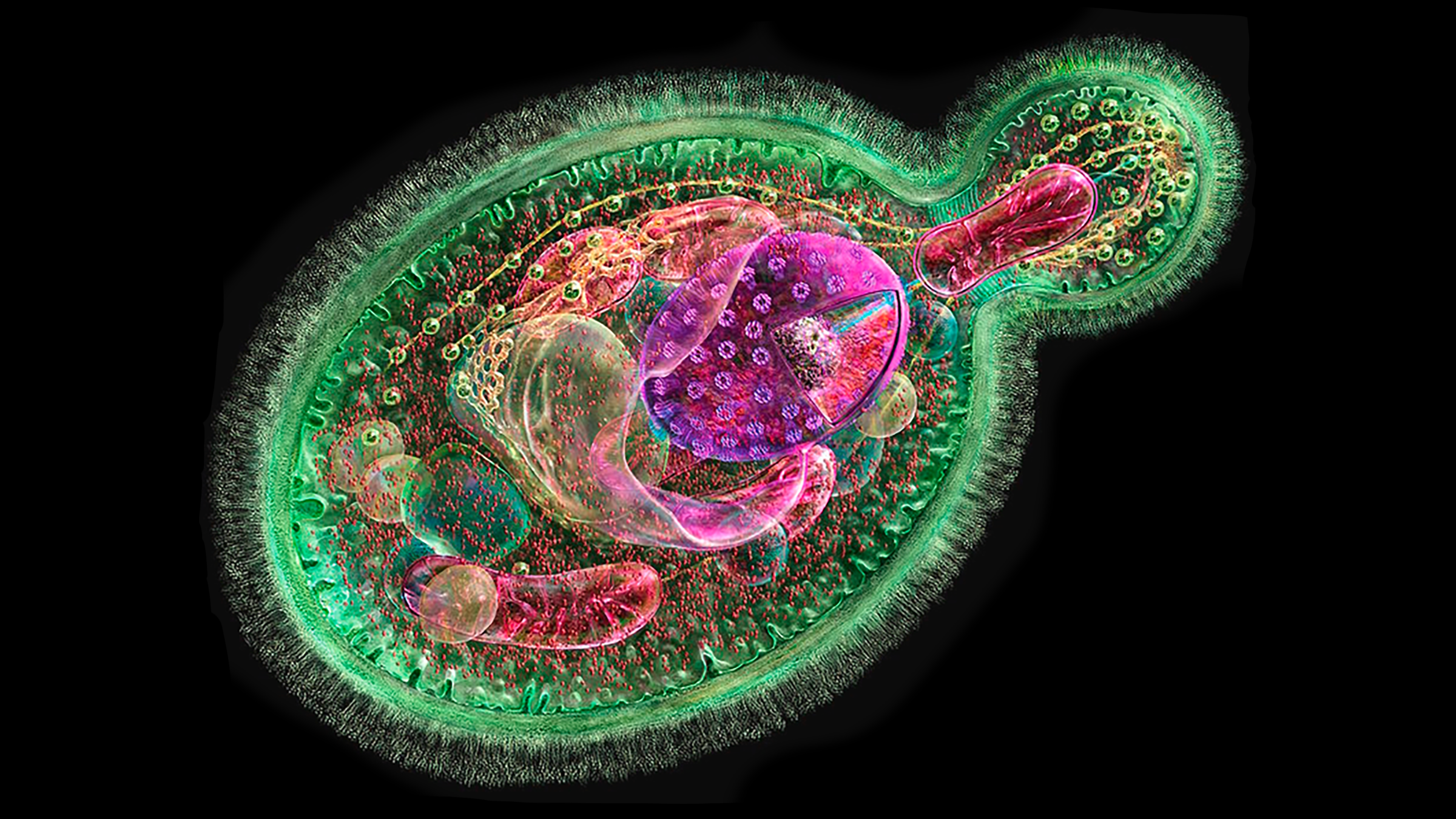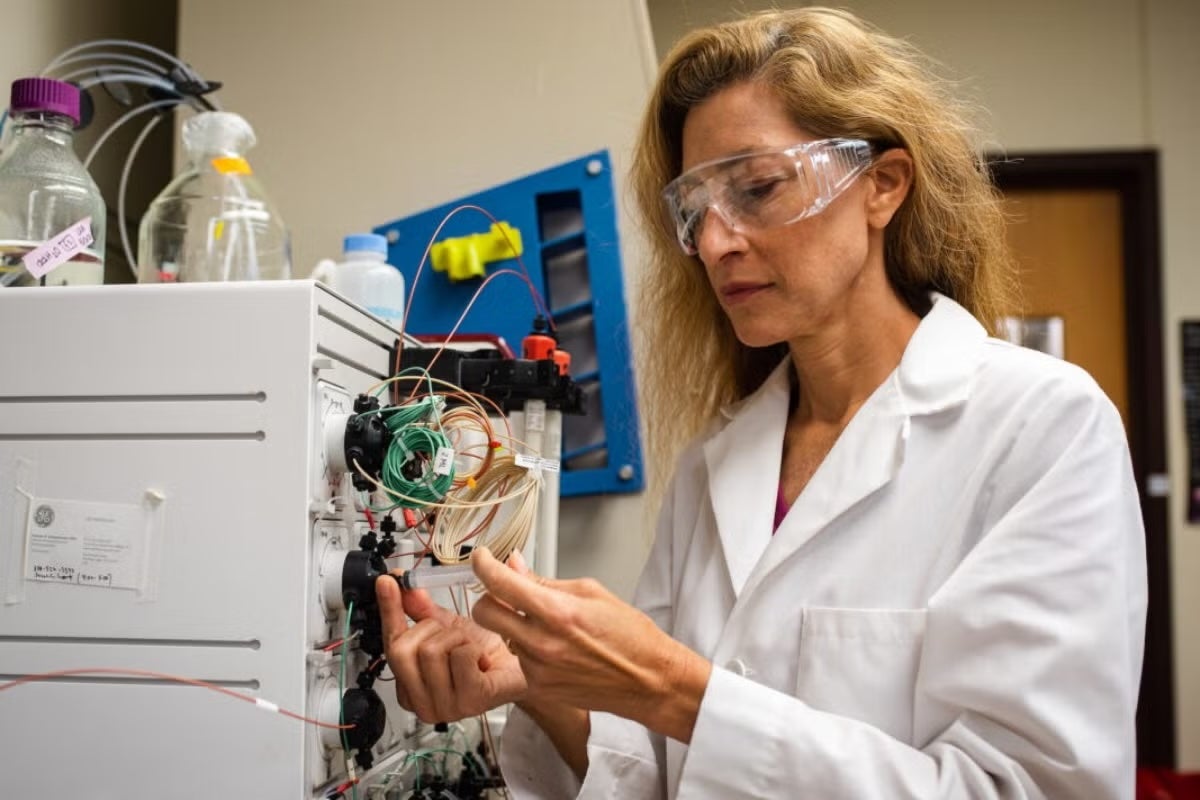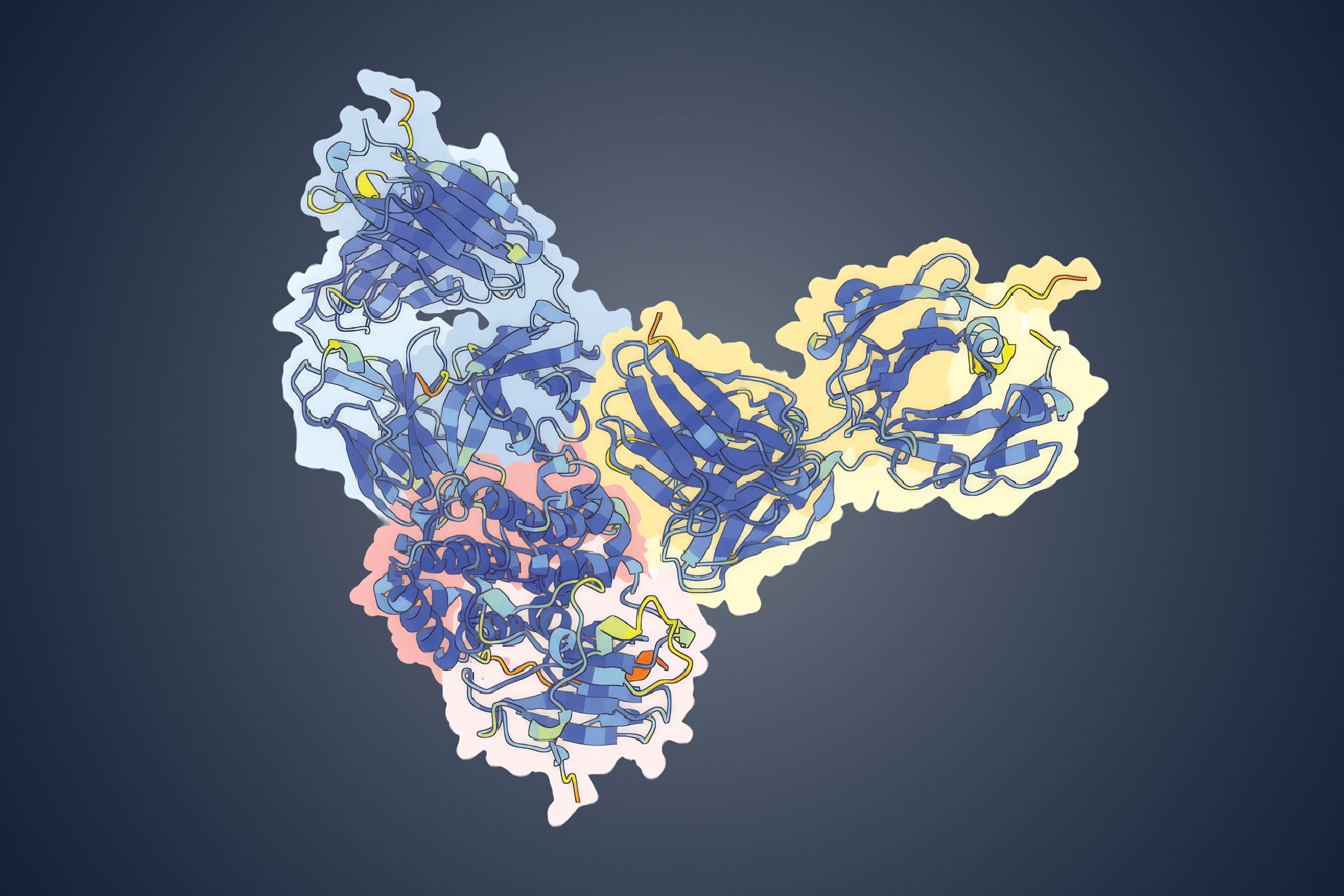Beauty and the Yeast
The lowly yeast turns out to be a powerful model organism for understanding human biology and disease

Despite a billion years of evolution separating us from the baker's yeast in our refrigerators, hundreds of genes from an ancestor that we share live on nearly unchanged in us both, say biologists at The University of Texas at Austin. Read more about Edward Marcotte and his team's research: Partly Human Yeast Show A Common Ancestor's Lasting Legacy
TRANSCRIPT
Marc Airhart: This is the Point of Discovery. I'm Marc Airhart. When we think of domesticated species, we tend to think of dogs and cats. Much of what we eat comes from domesticated plants like corn and wheat or domesticated animals like cows, chickens and goats. But let's not forget the lowly yeast. They are the underappreciated workhorses that fluff up our bread and turn plain old fruit juice and starches into adult beverages. It turns out our bond with yeast runs a lot deeper than bread and beer, as I found out when I visited the lab of Edward Marcotte.
Edward Marcotte: So this would be a typical molecular biology laboratory. There's a long series of benches and instruments for manipulating tiny amounts of liquids like DNA … and there are lots of petri dishes stacked up with cells growing on them and lots of vials with colored liquids …
MA: Marcotte is a professor of molecular biosciences at The University of Texas at Austin and co-director of the Center for Systems and Synthetic Biology.
EM: And what we would have is typically petri dishes covered with tiny little dots with something for the yeast to grow on – so if you imagine chicken broth and gelatin, it's basically something akin to that, although we don't use chicken broth or gelatin and the cells grow in little colonies, little bumps on the surface. And here you can smell one.
MA: Oh, that smells like socks.
EM: Something like that. [laughs]
MA: He says these tiny dots of yeast are actually a lot more like you and me than you'd think.
EM: Humans, although we look nothing like yeast cells, we share thousands of genes with yeast cells. And they're recognizable. We can look at a human gene and we can recognize a precise equivalent in the genome of the yeast cell. And this is because a billion years ago we had a common ancestor way, way, way back in the dawn of time and so we'd like to know if these genes really work the same way.
MA: Marcotte says of the thousands of genes that humans and yeast share, about 450 are critical for the survival of the yeast. That life-or-death element – you have the gene, you live – you don't have the gene, you die – is a powerful tool to test whether our genes do the same things that their genes do. So here's what Marcotte and his team did. They created hundreds of genetically engineered strains of yeast, which they call "humanized yeast." Each strain had a disabled yeast gene PLUS a human version of the gene that they could either turn on or off. The human gene acted like a sort of kill switch.
EM: And then we could turn off the human gene and the cell should die unless we turn on the human gene, in which case we could test to see whether the cells were capable of living if provided with the active human gene. And that was the essence of the test.
MA: It all sounds pretty simple, but for each gene pair, they tested it with the human gene on, with the human gene off and with control groups. And to be sure of their results, they essentially tested every gene pair in three different ways. All of that added up to thousands of mini-experiments over about four years. Ashiq Kachroo is a postdoctoral researcher who ran the experiments.
Ashiq Kachroo: So this was a crazy experiment. And we had no idea if it would work. It could have been a great failure or it could have been a great success. But in this case it was a great success.
MA: The researchers found that about half of the 450 yeast strains could grow and reproduce with just the human version of a critical gene.
EM: And so it was remarkable that half of them were doing the same thing. It's an incredible testament to the stability over a billion years of time of these systems. It argues that in both humans and yeast they are doing the same thing that they were doing in their ancestor a billion years ago.
MA: This work could open the door to new applications for human health. Scientists could study different versions of a gene to better understand how certain mutations lead to genetic disorders. They could also screen drugs to treat them.
Clause Wilke: Imagine you have a genetic disease.
That's Clause Wilke, a professor of integrative biology who built a computer simulation for the research project. He says imagine we know which gene causes your disease and that you have three mutations in that gene.
CW: How would you find out whether there is maybe a specific drug that might help you particularly because you have these specific mutations? Right now, one option might be to stick that gene into the yeast and we could see rapidly and easily in the yeast what this gene does and maybe to see that this drug off the shelf that normally helps doesn't actually help you because you have these three specific mutations but some other drug maybe would help really well because you have these three mutations. That's the kind of thing that this technology makes possible.
MA: Marcotte speculates that there might be another 1,000 or so pairs of swappable genes between humans and yeast yet to be discovered. Along with the approximately 200 swappable genes already identified, these might help in understanding why certain gene mutations are bad for human health and offer a better way to search for drugs to treat a host of human genetic diseases.The researchers say the next step in their work will be to insert entire groups of human genes into yeast. Each of these gene groups, or modules as they call them, work together to do something useful like build cell walls or convert food to energy.
AK: But the exciting part is the future where we can now use the information to build pathways involving 10s or 100s of genes at a time and ask if that system works as well – that will be fascinating because now we won't be just looking at a gene, but 30 different genes from humans in a simple cell – I think that will be a fascinating future for this science.
MA: Point of Discovery is a production of the University of Texas at Austin's College of Natural Sciences. We're on the web at cns.utexas.edu/point. Music for today's episode comes from Podington Bear. I'm Marc Airhart. Thanks for listening.



